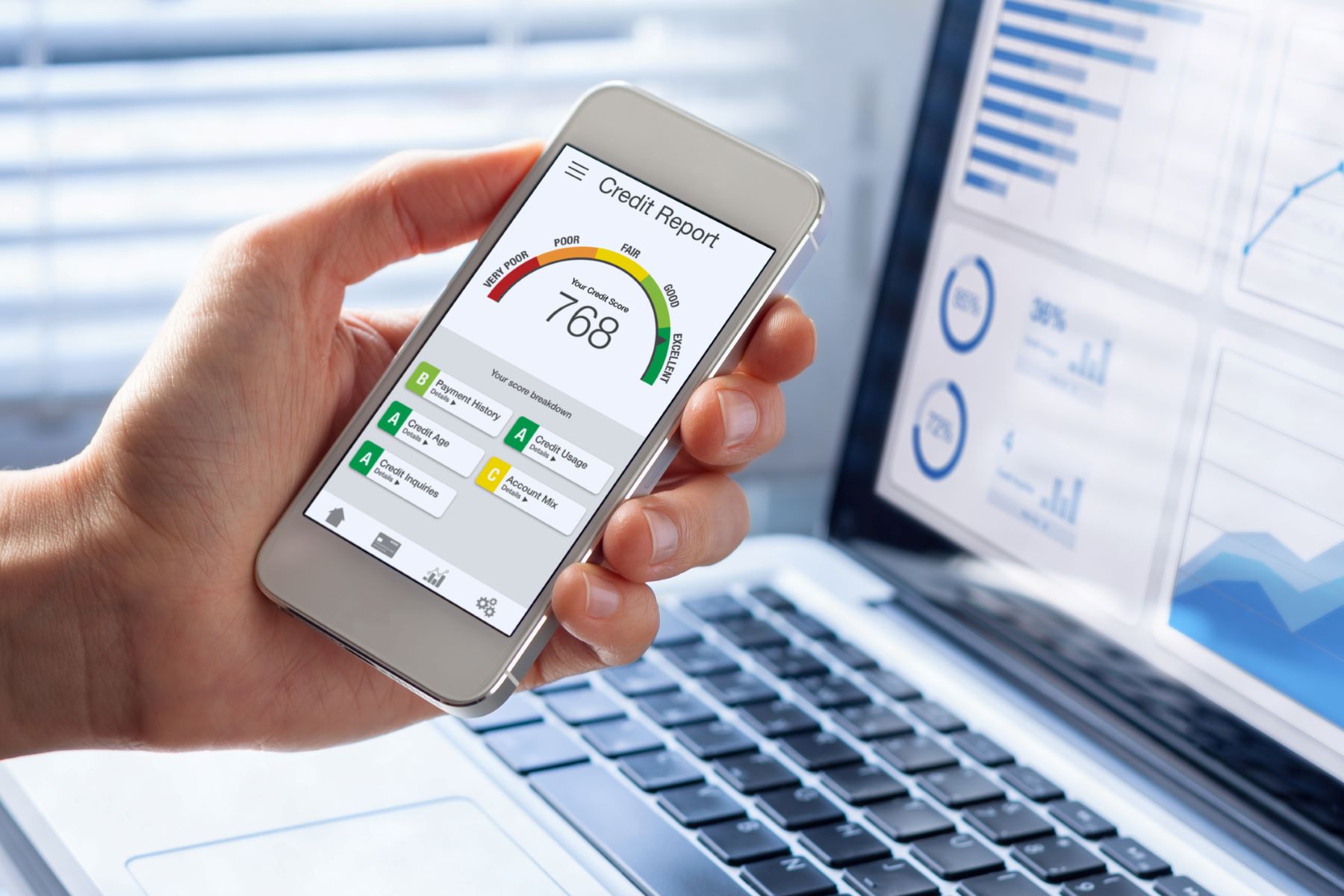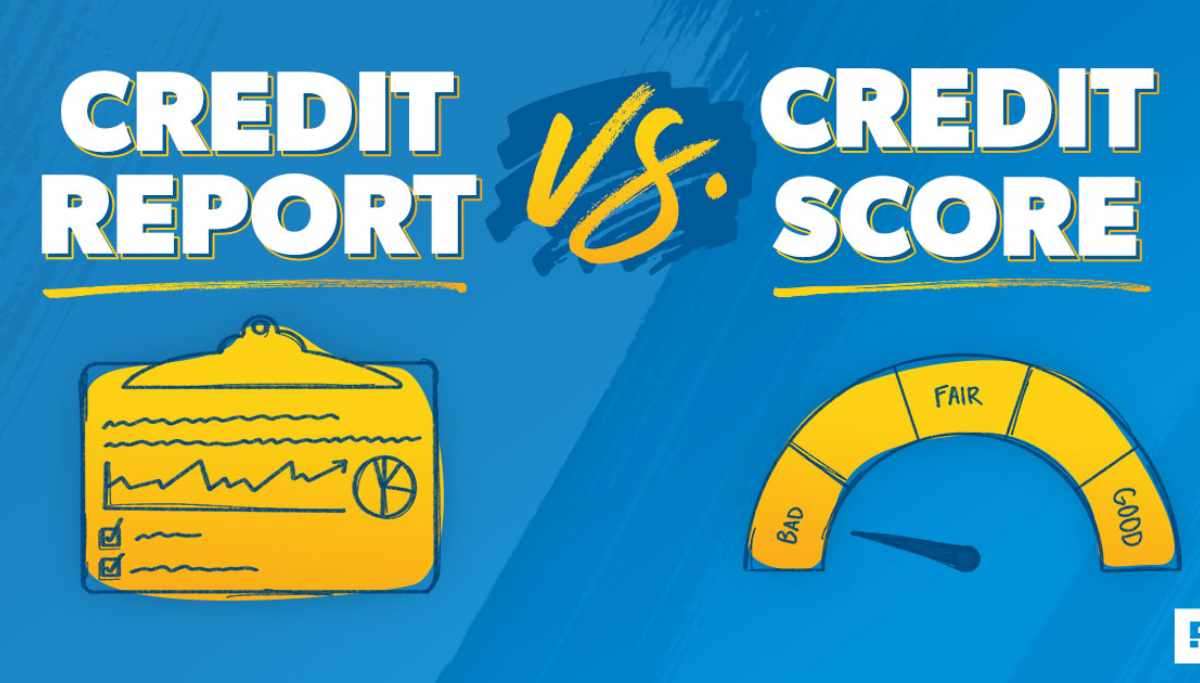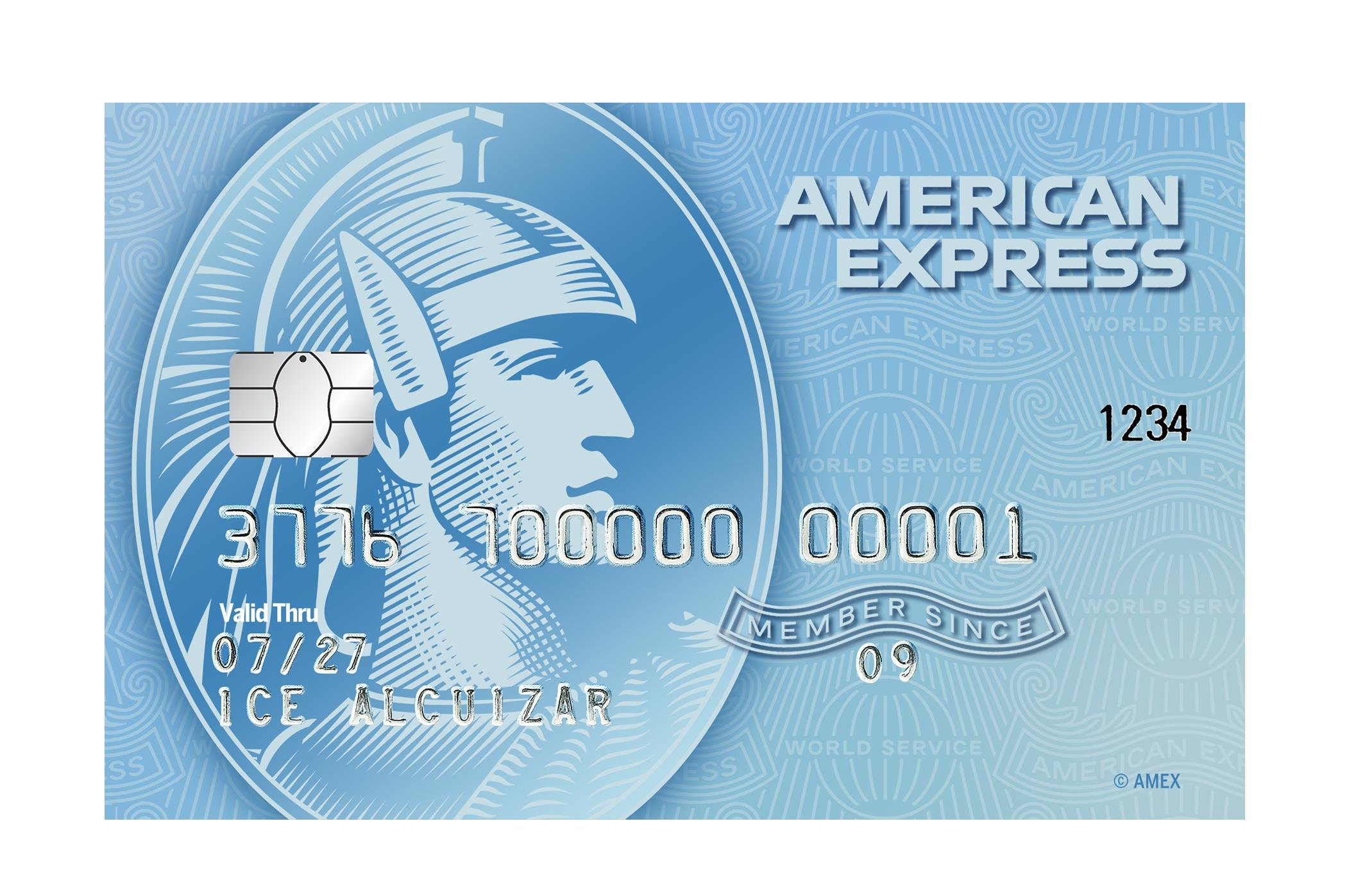Home>Finance>What Does Updated Tradeline Mean On Credit Report Alert


Finance
What Does Updated Tradeline Mean On Credit Report Alert
Published: October 20, 2023
Discover what "updated tradeline" means on your credit report alert and its significance in the world of finance.
(Many of the links in this article redirect to a specific reviewed product. Your purchase of these products through affiliate links helps to generate commission for LiveWell, at no extra cost. Learn more)
Table of Contents
- Introduction
- Understanding Tradelines on Credit Reports
- What is a Credit Report Alert?
- The Significance of an Updated Tradeline
- How Updated Tradelines Impact Credit Scores
- Benefits of Updated Tradelines on Credit Reports
- Potential Challenges of Updated Tradelines
- Tips for Managing Updated Tradelines
- Conclusion
Introduction
When it comes to managing your finances, keeping a close eye on your credit report is crucial. Your credit report is a comprehensive record of your financial history, including your payment history, outstanding debts, and credit utilization. In turn, your credit report plays a significant role in determining your creditworthiness and can impact your ability to secure loans, obtain favorable interest rates, and even rent an apartment.
One important aspect of a credit report that deserves attention is the presence of tradelines. Tradelines are essentially credit accounts that appear on your credit report, providing a detailed snapshot of your credit history with specific lenders. They include information such as the account type (credit card, loan, etc.), the credit limit or loan amount, the payment history, and the current balance.
However, it’s not just about the presence of tradelines on your credit report; the status of these tradelines is equally important. This is where the concept of an updated tradeline comes into play. Understanding what an updated tradeline means and its implications can help you better manage your credit and improve your financial health.
In this article, we will take a closer look at the significance of an updated tradeline on your credit report, how it can impact your credit scores, and identify the potential benefits and challenges associated with this aspect of your credit history. We will also provide some tips on effectively managing updated tradelines to optimize your credit standing. So, let’s dive in and explore this important aspect of credit reporting.
Understanding Tradelines on Credit Reports
In order to fully grasp the concept of an updated tradeline, it’s important to have a clear understanding of tradelines and how they function on credit reports.
Tradelines, as mentioned earlier, are the individual credit accounts that appear on your credit report. They serve as a record of your credit history with specific lenders, providing valuable information to potential creditors and lenders who review your creditworthiness.
Each tradeline includes details such as the lender’s name, the account number, the type of credit (credit card, mortgage, personal loan, etc.), the credit limit or loan amount, the date the account was opened, the payment history, and the current balance.
Tradelines are categorized into two types: revolving tradelines and installment tradelines. Revolving tradelines include credit cards and lines of credit, where you have a set credit limit and can borrow and repay funds as needed. Installment tradelines include loans such as mortgages, auto loans, and student loans, where you make fixed monthly payments over a predetermined period of time.
These tradelines provide credit bureaus and lenders with a comprehensive overview of your credit history, allowing them to assess your creditworthiness and make informed decisions regarding your eligibility for credit products.
It’s worth noting that tradelines can have a significant impact on your credit scores. Positive tradelines, characterized by a history of on-time payments and low credit utilization, can positively influence your credit scores, making you more attractive to potential lenders. On the other hand, negative tradelines, such as missed payments or high credit card balances, can have a detrimental effect on your credit scores, potentially leading to higher interest rates or even loan denials.
Now that we have a clearer understanding of what tradelines are and how they function on credit reports, let’s explore what it means to have an updated tradeline and why it is an important aspect of your credit report.
What is a Credit Report Alert?
A credit report alert is a notification or alert that is triggered when there is a significant update or change to your credit report. These alerts are designed to keep you informed about any important activity that may impact your creditworthiness and financial standing. The purpose of a credit report alert is to help you detect and address any potential issues or discrepancies in your credit history in a timely manner.
There are various types of credit report alerts that may be available to consumers. One common type is a fraud alert, which is placed on your credit report to alert lenders and creditors that you may be a victim of identity theft or fraudulent activity. This alert prompts lenders to take additional steps to verify your identity before extending credit in your name, providing an extra layer of security.
Another type of credit report alert is a credit monitoring alert, which notifies you of any changes to your credit report, such as new tradelines, changes in credit limits, or late payments. This type of alert allows you to stay informed about your credit activity and take appropriate action if any discrepancies or inaccuracies are found.
Additionally, some credit monitoring services offer alerts for specific events, such as when your credit score reaches a certain threshold or when a new inquiry is made on your credit report. These alerts can help you stay on top of your credit health and take proactive steps to maintain or improve your creditworthiness.
It’s important to note that credit report alerts are not automatic features and may require you to sign up for a credit monitoring service or take specific steps to activate them. However, the peace of mind and protection that credit report alerts can provide make it a valuable tool in managing and safeguarding your credit.
Now that we have a better understanding of what credit report alerts are, let’s explore why an updated tradeline is significant and how it can impact your credit scores.
The Significance of an Updated Tradeline
An updated tradeline holds great significance when it comes to your credit report and overall credit health. It refers to a tradeline on your credit report that has been recently updated with new information about your credit history with that particular lender.
The reason why an updated tradeline is important is that it provides lenders with the most up-to-date information about your credit behavior. This includes your payment history, credit utilization, and the status of your credit accounts. Lenders rely on this information to assess your creditworthiness and determine the level of risk associated with extending credit to you.
When a tradeline is updated, it reflects recent activity and can potentially influence your credit scores, both positively and negatively. For example, if you have been consistently making on-time payments and keeping your credit card balances low, an updated tradeline that reflects these positive behaviors can help boost your credit scores.
On the other hand, if you have missed payments or have a high credit utilization ratio, an updated tradeline can reflect these negative factors and potentially lower your credit scores. This is why it’s crucial to ensure that your tradelines are accurately updated to reflect your credit behavior.
In addition to affecting your credit scores, an updated tradeline can also impact other aspects of your financial life. For example, lenders may review your credit report when considering your eligibility for a loan or a credit limit increase. By having updated tradelines that demonstrate responsible credit behavior, you increase your chances of being approved for credit products and securing more favorable terms.
Moreover, an updated tradeline can provide you with a clear picture of your financial progress and help you track your credit goals. By regularly reviewing your credit report and monitoring the updates to your tradelines, you can identify areas for improvement and take the necessary steps to enhance your creditworthiness over time.
Overall, the significance of an updated tradeline lies in its ability to reflect your current credit behavior accurately. By keeping your tradelines updated and ensuring they reflect positive financial habits, you can optimize your credit profile and improve your chances of achieving your financial goals.
In the next section, we will explore how updated tradelines can impact your credit scores and why this is crucial for your creditworthiness.
How Updated Tradelines Impact Credit Scores
Updated tradelines play a significant role in determining your credit scores. When lenders and credit bureaus assess your creditworthiness, they closely analyze the information provided by your tradelines. Here’s a closer look at how updated tradelines can impact your credit scores:
1. Payment History: Payment history is one of the most critical factors in your credit scores. By having updated tradelines that showcase a history of on-time payments, you demonstrate to lenders that you are responsible and reliable when it comes to repaying your debts. This can positively impact your credit scores and increase your creditworthiness.
2. Credit Utilization: Credit utilization refers to the percentage of your available credit that you are currently using. When your tradelines are updated to reflect low credit utilization, it can have a positive effect on your credit scores. Keeping your balances low compared to your credit limits shows lenders that you are managing your credit responsibly and using it wisely.
3. Account Age: The age of your tradelines also plays a role in determining your credit scores. Lenders typically favor longer credit histories as it provides them with more data to assess your creditworthiness. Updated tradelines can reflect the age of your accounts accurately, helping lenders evaluate your creditworthiness and potentially boosting your credit scores.
4. Negative Information: Unfortunately, not all updated tradelines have a positive impact on credit scores. If your tradelines are updated to reflect late payments, collections, or other negative information, it can have a detrimental effect on your credit scores. It’s crucial to address any negative information promptly and work towards improving your credit behavior to mitigate the impact on your credit scores.
5. New Tradelines: The addition of new tradelines to your credit report can also influence your credit scores. When you open a new credit account, it may initially cause a slight dip in your credit scores due to the inquiry and potential increase in credit utilization. However, with responsible credit management and consistent on-time payments, these updated tradelines can positively impact your credit scores over time.
It’s important to remember that the impact of updated tradelines on your credit scores can vary based on your overall credit profile and individual credit scoring models used by lenders. Different lenders may weigh certain factors differently, and it’s challenging to predict the precise impact on credit scores in every situation.
Nevertheless, keeping your tradelines updated with accurate and positive information is critical to maintaining healthy credit scores and improving your creditworthiness. Consistently practicing responsible credit behavior, such as making on-time payments and maintaining low credit utilization, can contribute to favorable updates on your tradelines and help you achieve your credit goals.
Next, we will explore the potential benefits and challenges associated with updated tradelines on your credit report.
Benefits of Updated Tradelines on Credit Reports
Having updated tradelines on your credit report can provide several significant benefits for your overall credit health and financial well-being. Let’s explore some of the key advantages of having updated tradelines:
1. Improved Credit Scores: One of the most notable benefits of having updated tradelines is the potential to improve your credit scores. Positive updates, such as on-time payments and low credit utilization, can positively impact your credit scores and make you more attractive to lenders. This can lead to better interest rates, improved loan terms, and increased access to credit in the future.
2. Enhanced Creditworthiness: Lenders and creditors look at your credit report to assess your creditworthiness before approving credit applications. Having updated tradelines that reflect responsible credit behavior and a positive payment history demonstrates your financial reliability and increases your chances of getting approved for credit products.
3. Building a Strong Credit History: Your credit history is an important factor in determining your creditworthiness. Updated tradelines contribute to building a robust credit history, showcasing your experience with different types of credit accounts and your ability to manage them effectively. This can be beneficial when applying for larger loans, such as mortgages or business loans, as lenders prefer borrowers with a proven track record of responsible credit management.
4. Financial Goal Setting: Updated tradelines provide valuable information about your financial progress. Regularly reviewing and monitoring your tradelines allows you to track your credit goals and make informed decisions regarding your financial future. It enables you to identify areas for improvement, such as paying down debts or reducing credit card balances, and take the necessary steps to achieve your financial objectives.
5. Increased Negotiating Power: Having updated tradelines can also give you more negotiating power when dealing with lenders or creditors. A strong credit report with positive tradelines may enable you to negotiate lower interest rates, better loan terms, or higher credit limits. This can result in significant savings and more favorable financial options.
6. Heightened Financial Security: Keeping a close eye on your credit report and having updated tradelines can help detect and address any inaccuracies or fraudulent activities in a timely manner. By regularly monitoring your credit report, you can identify potential errors or signs of identity theft, allowing you to take immediate action to protect your financial security.
Remember that the benefits of having updated tradelines can vary based on individual circumstances and credit profiles. It’s essential to maintain positive credit behavior consistently and review your credit report regularly to ensure that your tradelines accurately reflect your financial activities.
Next, we will delve into some potential challenges you may encounter when dealing with updated tradelines on your credit report.
Potential Challenges of Updated Tradelines
While updated tradelines on your credit report offer several benefits, they can also present some potential challenges that you should be aware of. Understanding these challenges can help you navigate your credit journey more effectively. Let’s explore some of the potential challenges of updated tradelines:
1. Negative Impact on Credit Scores: Just as positive updates on tradelines can improve your credit scores, negative updates can have the opposite effect. Late payments, collections, or high credit card balances are examples of negative updates that can lower your credit scores. It’s essential to consistently practice responsible credit behavior to mitigate the impact of any negative updates on your creditworthiness.
2. Inaccurate or Outdated Information: While credit bureaus strive to maintain accurate and updated information on your credit report, errors can occur. In some cases, updated tradelines may contain incorrect or outdated information that could negatively impact your credit scores. It’s crucial to regularly review your credit report and report any inaccuracies to the credit bureaus to ensure the information reflected is accurate and up-to-date.
3. Limited Control over Updates: As a consumer, you have limited control over when and how updates are made to your tradelines. For example, if a lender fails to report your payment on time, it may not reflect as an updated tradeline, potentially harming your credit scores. It’s important to maintain open communication with your lenders and maintain good record-keeping practices to ensure the accurate reporting of your credit activities.
4. Time Constraints: It can take time for updated tradelines to reflect on your credit report. If you recently made positive changes to your credit behavior, such as paying off a loan or reducing credit card balances, it may take a few billing cycles for those updates to be reflected on your tradelines. Patience is key when waiting for updated tradelines to accurately reflect your current credit status.
5. Understanding Credit Scoring Models: Each credit bureau and lender may utilize different credit scoring models to assess creditworthiness. This means that the impact of updated tradelines on your credit scores may vary depending on the specific scoring model used. Understanding the credit scoring models used by lenders can help you anticipate the potential impact on your credit scores.
While these challenges exist, they can be managed by consistently practicing responsible credit behavior, regularly monitoring your credit report, and addressing any inaccuracies or discrepancies promptly. By staying informed and proactive, you can navigate potential challenges associated with updated tradelines and maintain a healthy credit profile.
In the next section, we will provide some tips for effectively managing updated tradelines on your credit report.
Tips for Managing Updated Tradelines
Effectively managing updated tradelines on your credit report is crucial for maintaining a healthy credit profile. Here are some tips to help you manage your tradelines and optimize your credit standing:
1. Regularly Check Your Credit Report: Stay vigilant by reviewing your credit report regularly. You are entitled to a free annual credit report from each of the three major credit bureaus. Checking your credit report allows you to spot any errors or discrepancies, ensuring that your tradelines reflect accurate and updated information.
2. Monitor Credit Alerts: Sign up for credit monitoring services that provide real-time alerts for any changes or updates to your credit report. These alerts can help you stay informed and take immediate action if there are any suspicious or unauthorized activities on your tradelines.
3. Maintain Good Payment Behavior: Timely payments are crucial for maintaining healthy tradelines. Make your payments on time, every time, to avoid any negative updates that could harm your credit scores. Consider setting up automatic payments or reminders to ensure you never miss a payment deadline.
4. Keep Credit Utilization in Check: Keep your credit card balances low in proportion to your credit limits. High credit utilization can negatively impact your credit scores. Ideally, aim to keep your credit utilization below 30% to demonstrate responsible credit management and positively impact your tradelines.
5. Communicate with Lenders: If you encounter any financial difficulties that may impact your ability to make payments, it’s important to proactively communicate with your lenders. They may be willing to work out a modified payment plan or offer temporary relief to help you manage your financial obligations. Open communication can prevent negative updates on your tradelines.
6. Plan Credit Inquiries Strategically: Each time you apply for new credit, it triggers a hard inquiry on your credit report, which can lower your credit scores temporarily. Plan your credit applications strategically and avoid excessive inquiries, especially within a short period of time. Apply for credit only when you truly need it and consider the potential impact on your credit scores.
7. Diversify Your Credit Mix: Having a mix of different types of tradelines, such as credit cards, loans, and mortgages, can positively impact your credit scores. It demonstrates your ability to handle various types of credit responsibly. However, only open new credit accounts if it aligns with your financial goals and you can manage them effectively.
8. Be Patient: It takes time for your updated tradelines to reflect on your credit report. Patience is key when waiting for positive changes to be reflected in your credit scores. Continue practicing responsible credit behavior, and over time, you will see the positive impact on your credit profile.
By following these tips, you can effectively manage your updated tradelines and maintain a healthy credit profile. Remember, managing your credit is an ongoing process, and consistent effort is key to optimizing the impact of your tradelines on your credit scores.
Finally, let’s summarize the key points discussed in this article.
Conclusion
Having a clear understanding of updated tradelines on your credit report is vital for managing your credit health effectively. The presence of updated tradelines provides lenders with the most up-to-date information about your credit behavior, which can significantly impact your credit scores and creditworthiness.
Positive updates on your tradelines, such as on-time payments and low credit utilization, can boost your credit scores and increase your chances of obtaining favorable interest rates and loan terms. On the other hand, negative updates, such as late payments or high credit card balances, can have adverse effects on your credit scores.
Understanding the potential benefits and challenges of updated tradelines allows you to navigate your credit journey more effectively. Benefiting from updated tradelines includes improved credit scores, enhanced creditworthiness, and the ability to set and achieve your financial goals.
To effectively manage your tradelines, it’s essential to regularly check your credit report, monitor credit alerts, maintain good payment behavior, and keep credit utilization in check. Open communication with lenders, strategic planning of credit inquiries, diversifying your credit mix, and being patient are also crucial factors in successfully managing your updated tradelines.
Remember, managing your credit is an ongoing process that requires diligence and consistent effort. By staying informed, proactive, and responsible, you can optimize the impact of updated tradelines on your credit scores and overall credit profile.
Ultimately, managing your updated tradelines effectively contributes to your financial health and opens doors to more favorable financial opportunities. By taking control of your credit, you can pave the way toward a brighter financial future.














